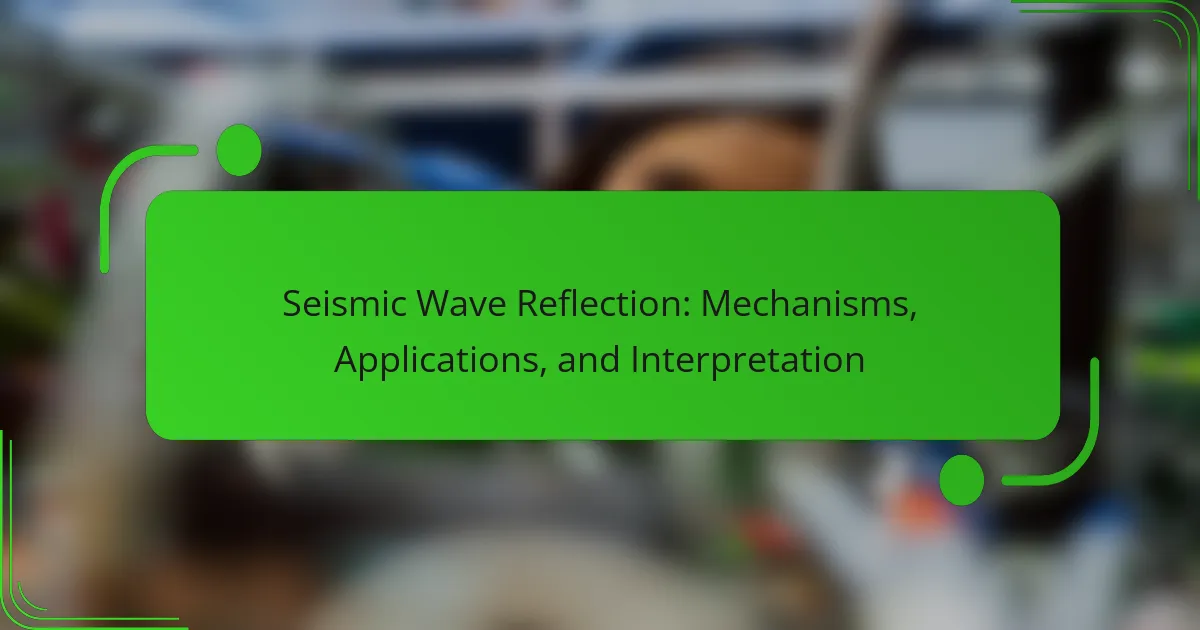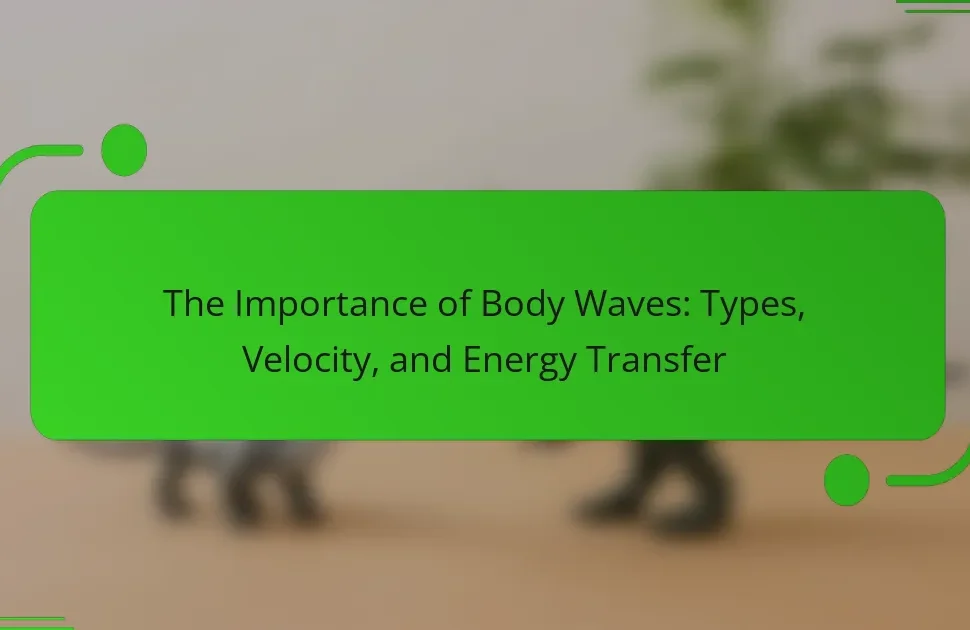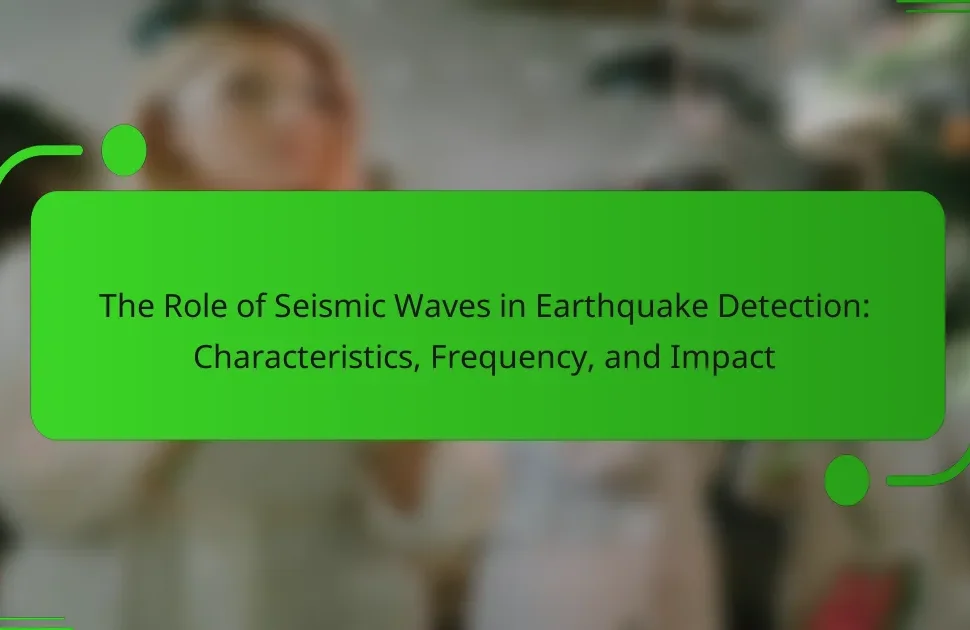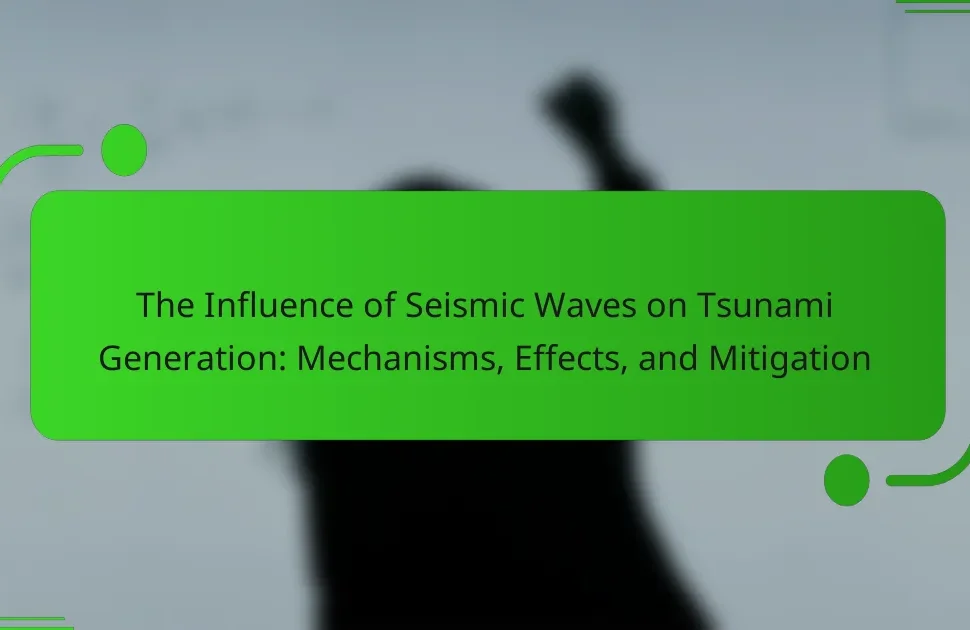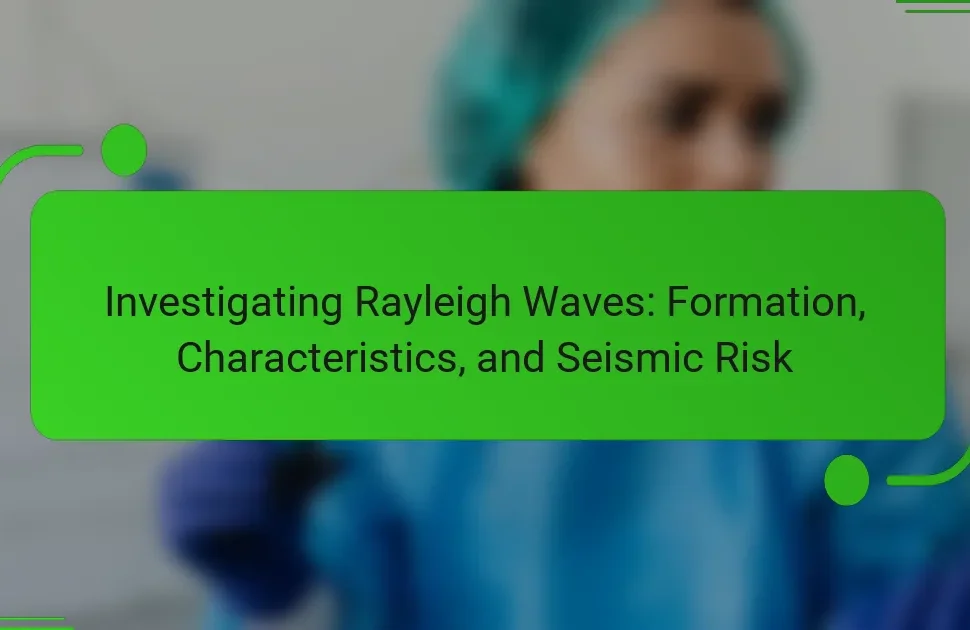Seismic wave reflection refers to the phenomenon where energy waves generated by the sudden release of energy in the Earth’s crust, particularly during earthquakes, bounce off geological boundaries. This article explores the two main types of seismic waves—body waves (P and S waves) and surface waves—along with the mechanisms of reflection that occur when these waves encounter different geological materials. It outlines the applications of seismic wave reflection in oil and gas exploration, civil engineering, and environmental studies, emphasizing its significance in mapping subsurface structures and assessing geological formations. Additionally, the article covers the interpretation techniques used by seismologists, including seismic tomography and the analysis of wave amplitude and frequency, to gain insights into subsurface geology and resource identification.
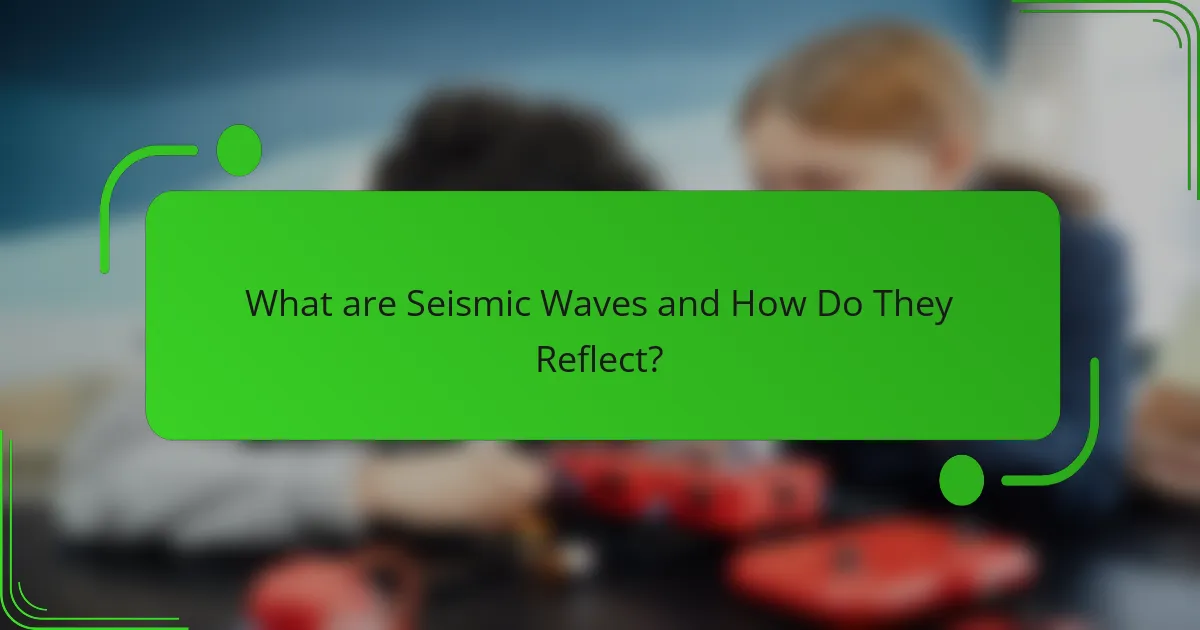
What are Seismic Waves and How Do They Reflect?
Seismic waves are energy waves generated by the sudden release of energy in the Earth’s crust, typically during an earthquake. They travel through the Earth and can be classified into two main types: body waves and surface waves. Body waves include primary (P) waves, which are compressional waves, and secondary (S) waves, which are shear waves. Surface waves travel along the Earth’s surface and generally cause more damage during seismic events.
Seismic waves reflect when they encounter a boundary between different geological materials, such as rock layers or faults. This reflection occurs due to changes in material properties, such as density and elasticity. The angle of incidence, which is the angle at which the wave strikes the boundary, plays a crucial role in determining the angle of reflection, as described by the law of reflection.
The reflection of seismic waves is utilized in various applications, including oil and gas exploration, where geophysicists analyze reflected waves to map subsurface structures. This technique, known as seismic reflection surveying, provides valuable information about the Earth’s subsurface, aiding in resource extraction and geological studies.
How do seismic waves travel through different geological layers?
Seismic waves travel through different geological layers by varying their speed and behavior based on the properties of each layer. These waves can be classified into primary (P) waves and secondary (S) waves. P-waves are compressional waves that move fastest through solid and liquid layers. They can travel through both the crust and the mantle, with speeds ranging from 5 to 8 km/s in the crust. S-waves are shear waves that only move through solid materials and are slower, traveling at about 3 to 4.5 km/s in the crust.
When seismic waves encounter a boundary between layers, their speed changes due to differences in density and elasticity. This change in speed causes reflection and refraction of the waves. For instance, when P-waves hit a denser layer, they slow down and bend, while S-waves are reflected back if they reach a liquid layer. The ability to analyze these waves helps geologists understand subsurface structures and compositions.
What types of seismic waves exist and how do they differ?
There are two main types of seismic waves: body waves and surface waves. Body waves include primary waves (P-waves) and secondary waves (S-waves). P-waves are compressional waves that travel fastest through the Earth. They can move through solids, liquids, and gases. S-waves are shear waves that travel slower than P-waves. They can only move through solids, not liquids or gases.
Surface waves travel along the Earth’s surface and are slower than body waves. They typically cause more damage during an earthquake. There are two main types of surface waves: Love waves and Rayleigh waves. Love waves move horizontally and can cause significant shaking. Rayleigh waves create an elliptical motion, similar to ocean waves, causing both vertical and horizontal ground movement.
The differences between these waves lie in their speed, the materials they can traverse, and their movement characteristics. P-waves are the fastest and can travel through all states of matter. S-waves are slower and only move through solids. Surface waves are the slowest and often result in the most destructive shaking during seismic events.
What factors influence the speed of seismic wave propagation?
The speed of seismic wave propagation is influenced by several key factors. These factors include the material properties of the medium through which the waves travel. The density of the material affects wave speed; denser materials typically allow faster wave propagation. Additionally, the elastic properties of the medium, such as shear modulus and bulk modulus, significantly impact speed. Higher elastic moduli result in increased wave velocities.
Temperature also plays a role; warmer materials can lead to faster seismic waves. Furthermore, the presence of fluids within the rocks can alter wave speeds. For instance, saturated materials often exhibit slower propagation compared to dry materials.
Lastly, the type of seismic wave influences speed; primary waves (P-waves) travel faster than secondary waves (S-waves) due to their compressional nature. These relationships are well-documented in geophysical studies, confirming the impact of these factors on seismic wave propagation.
Why is the reflection of seismic waves important in geophysics?
The reflection of seismic waves is crucial in geophysics because it helps to identify subsurface structures. When seismic waves encounter different geological layers, they reflect back to the surface. This reflection provides valuable information about the composition and properties of the Earth’s interior. Geophysicists analyze these reflected waves to create images of subsurface formations. Techniques like seismic reflection profiling rely on this principle. Accurate interpretation of these reflections can reveal oil and gas reserves. Additionally, it aids in understanding earthquake mechanisms and assessing geological hazards. Overall, the reflection of seismic waves is fundamental for exploration and understanding Earth’s geology.
How does wave reflection aid in subsurface imaging?
Wave reflection aids in subsurface imaging by providing data on geological structures. When seismic waves encounter different materials, they reflect back to the surface. This reflection creates a profile of subsurface layers. The time it takes for waves to return indicates depth. Variations in wave amplitude reveal material properties. This technique is fundamental in oil and gas exploration. It helps identify reservoirs and assess their potential. Studies show that effective wave reflection can increase imaging accuracy by up to 30%.
What role does seismic wave reflection play in earthquake studies?
Seismic wave reflection is crucial in earthquake studies as it helps identify subsurface geological structures. By analyzing reflected seismic waves, scientists can map faults and assess their potential for seismic activity. This technique improves understanding of earthquake mechanisms. Reflection data reveals the depth and orientation of geological layers. It also aids in locating areas with high seismic risk. Research shows that reflection techniques can enhance earthquake prediction models. Accurate mapping of faults contributes to better risk assessment for communities. Thus, seismic wave reflection is a key tool in advancing earthquake research and safety measures.
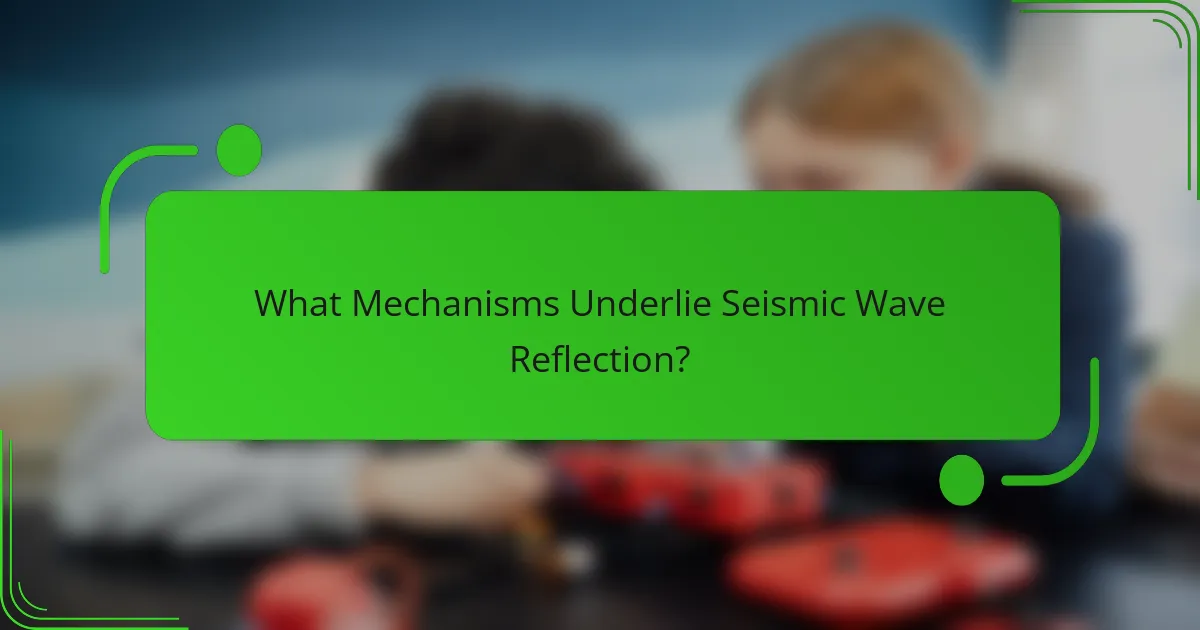
What Mechanisms Underlie Seismic Wave Reflection?
Seismic wave reflection occurs due to the contrast in acoustic impedance between different geological layers. When seismic waves encounter a boundary with differing density or elastic properties, part of the energy is reflected back. This reflection is governed by Snell’s Law, which describes the angle of incidence and reflection. The amount of energy reflected depends on the specific properties of the materials involved. For example, a significant contrast in density leads to a higher percentage of wave reflection. Additionally, the frequency of the seismic waves influences the reflection process. Higher frequencies may reflect differently compared to lower frequencies. These principles are fundamental in geophysical exploration, particularly in oil and gas exploration, where seismic reflection data helps map subsurface structures.
How do geological interfaces affect seismic wave reflection?
Geological interfaces significantly influence seismic wave reflection. These interfaces are boundaries between different geological materials, such as rock layers or soil types. When seismic waves encounter an interface, their speed and density change, leading to reflection. The amount of energy reflected depends on the contrast in acoustic impedance between the materials. Higher impedance contrasts yield stronger reflections. This principle is fundamental in seismic exploration and subsurface imaging. For instance, oil and gas exploration relies on detecting these reflections to identify potential reservoirs.
What are the key properties of materials that influence reflection?
The key properties of materials that influence reflection are density, elasticity, and surface roughness. Density affects the impedance of the material. Higher density materials typically reflect more seismic waves. Elasticity determines how much a material can deform under stress. More elastic materials can absorb energy, reducing reflection. Surface roughness impacts how waves scatter upon hitting a surface. Smoother surfaces lead to more coherent reflections. These properties collectively determine the efficiency of seismic wave reflection in geological formations.
How do changes in density and velocity impact wave behavior?
Changes in density and velocity significantly impact wave behavior. Increased density generally leads to higher acoustic impedance, causing waves to reflect more at boundaries. Conversely, a decrease in density can reduce impedance, allowing for greater transmission of waves. Changes in velocity affect the wave’s speed and frequency. Higher velocity typically results in faster wave propagation and altered waveforms. For example, seismic waves travel faster in denser materials like granite compared to less dense materials like sediment. This relationship is crucial for interpreting seismic data in geophysical studies.
What are the mathematical models used to describe wave reflection?
Mathematical models used to describe wave reflection include the wave equation, Snell’s law, and the reflection coefficient. The wave equation describes how waves propagate and reflects at boundaries. Snell’s law calculates the angles of incidence and reflection based on wave velocities in different media. The reflection coefficient quantifies the ratio of reflected wave amplitude to incident wave amplitude. These models are fundamental in seismic analysis, aiding in the interpretation of subsurface structures. They are validated through empirical studies and numerical simulations in geophysics.
How do Snell’s Law and reflection coefficients apply in seismic studies?
Snell’s Law and reflection coefficients are fundamental in seismic studies for analyzing wave behavior at interfaces. Snell’s Law describes how seismic waves change direction when they encounter different geological layers. It states that the ratio of the sines of the angles of incidence and refraction is equivalent to the ratio of the velocities in the two media. This principle helps in determining the angles at which waves are refracted or reflected.
Reflection coefficients quantify the proportion of seismic wave energy reflected at an interface between two different materials. This coefficient depends on the acoustic impedances of the two layers. Higher differences in impedance lead to greater reflection coefficients, indicating more energy is reflected back to the surface.
In seismic studies, applying Snell’s Law allows geophysicists to model wave propagation and predict reflection patterns. The reflection coefficients provide insights into subsurface material properties. These concepts are crucial for interpreting seismic data in oil and gas exploration, as well as understanding geological structures.
What are the limitations of current models in predicting reflection?
Current models in predicting reflection have several limitations. They often rely on simplified assumptions about subsurface conditions. These assumptions can lead to inaccuracies in the predicted reflection responses. Many models do not account for complex geological structures. Variability in material properties can also affect reflection predictions. Additionally, current models may struggle with non-linear wave propagation. Real-world conditions often introduce noise that models do not adequately address. Lastly, computational limitations can restrict the resolution of predictions.
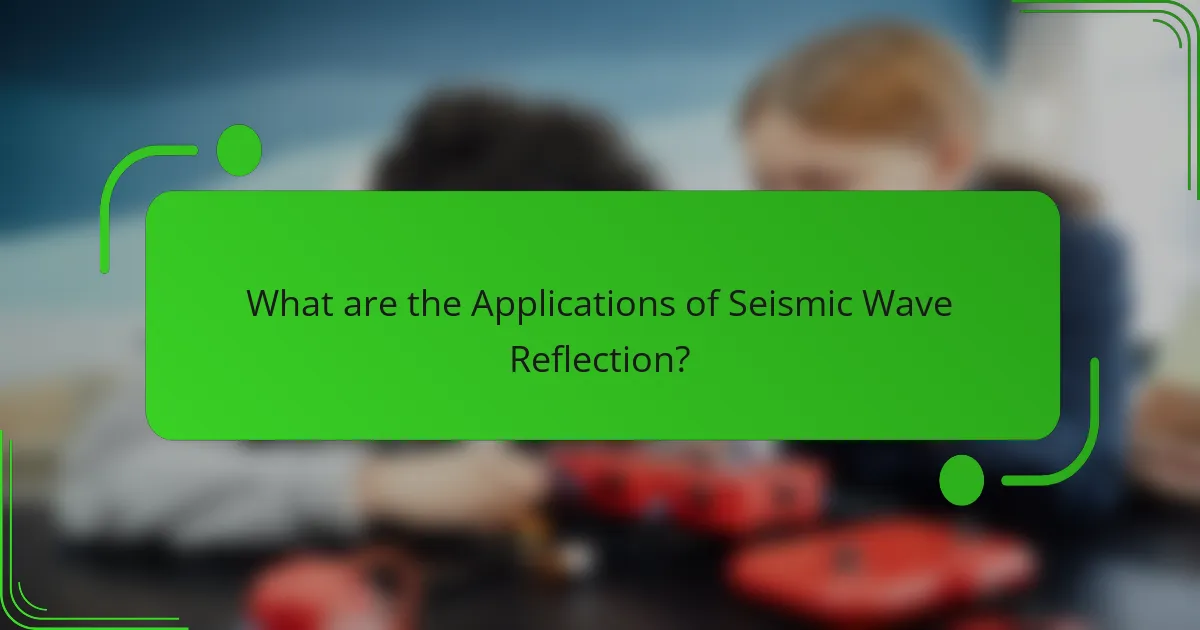
What are the Applications of Seismic Wave Reflection?
Seismic wave reflection has several applications in geophysical exploration. It is primarily used in oil and gas exploration to locate hydrocarbon reservoirs. By analyzing reflected seismic waves, geologists can interpret subsurface structures. This method helps in mapping geological formations and identifying potential drilling sites. Additionally, seismic reflection is used in civil engineering for site characterization. It aids in assessing ground stability for construction projects. Environmental studies also utilize seismic reflection to investigate subsurface contamination. The technique is effective for monitoring subsurface changes over time, such as land subsidence. Overall, seismic wave reflection is a vital tool in various fields related to subsurface analysis.
How is seismic wave reflection used in oil and gas exploration?
Seismic wave reflection is used in oil and gas exploration to identify subsurface geological structures. This technique involves generating seismic waves that travel through the Earth and reflect off different layers of rock. The reflected waves are then recorded and analyzed to create images of the subsurface. These images help geologists and geophysicists locate potential oil and gas reservoirs. The process allows for the assessment of rock properties and fluid content. Accurate interpretation of the data can lead to more efficient drilling and resource extraction. Studies show that seismic reflection methods significantly increase the success rate of exploration efforts.
What techniques enhance the accuracy of subsurface imaging?
Techniques that enhance the accuracy of subsurface imaging include advanced seismic processing, machine learning algorithms, and multi-scale imaging. Advanced seismic processing utilizes sophisticated algorithms to improve data interpretation. Machine learning algorithms analyze large datasets for pattern recognition, enhancing imaging precision. Multi-scale imaging integrates data from various depths for a comprehensive view. These techniques have been validated through studies showing improved resolution in geological surveys. For instance, a research study by Liu et al. (2020) demonstrated that applying machine learning in seismic data interpretation increased accuracy by 30%.
How does seismic reflection contribute to resource management?
Seismic reflection contributes to resource management by providing detailed subsurface imaging. This technique helps identify and quantify natural resources such as oil, gas, and minerals. By analyzing reflected seismic waves, geologists can map geological structures. These maps indicate the presence of resource deposits. Accurate subsurface data reduces exploration costs. It also minimizes environmental impact. Studies show that seismic reflection can increase recovery rates of resources. This method enhances decision-making for resource extraction and management.
What role does seismic reflection play in civil engineering?
Seismic reflection plays a crucial role in civil engineering by providing valuable subsurface information. It helps engineers identify geological structures and assess soil conditions. This technique uses seismic waves to detect changes in material properties underground. Engineers utilize the data to inform decisions on site selection and design. Accurate subsurface mapping can prevent structural failures. Seismic reflection surveys are also cost-effective compared to other exploration methods. The information gathered aids in risk assessment for construction projects. Overall, seismic reflection enhances the safety and efficiency of civil engineering practices.
How can seismic data inform the design of structures?
Seismic data informs the design of structures by providing critical information about ground motion and soil behavior during earthquakes. This data helps engineers assess the seismic risk associated with specific locations. It enables the identification of potential hazards, such as liquefaction or landslides. Engineers can use seismic data to determine appropriate building materials and structural systems. The data informs the design of foundations to withstand seismic forces. It also aids in developing building codes that enhance safety and resilience. Historical seismic data shows patterns of ground shaking, which can be used for predictive modeling. This modeling helps in designing structures that can absorb and dissipate energy effectively during seismic events.
What are the implications of seismic reflection for hazard assessment?
Seismic reflection has significant implications for hazard assessment. It provides critical data on subsurface structures and geological features. This information helps identify potential hazards such as fault lines and unstable ground. Accurate mapping of these features can predict earthquake risks. Additionally, seismic reflection aids in assessing landslide and liquefaction potential. By analyzing reflection data, geologists can evaluate the stability of the ground for construction projects. Enhanced understanding of subsurface conditions leads to better risk management strategies. Ultimately, seismic reflection contributes to improved safety in urban planning and infrastructure development.
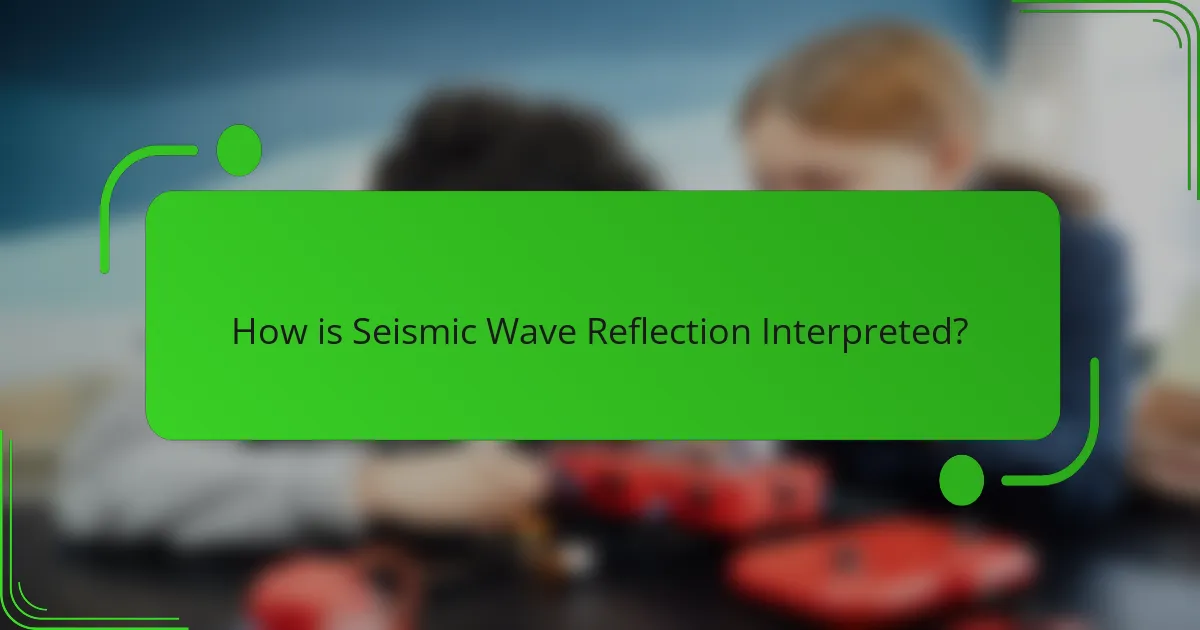
How is Seismic Wave Reflection Interpreted?
Seismic wave reflection is interpreted through the analysis of reflected seismic waves. These waves bounce off subsurface geological interfaces, such as rock layers or faults. The time it takes for waves to return to the surface is measured. This time, known as travel time, helps determine the depth and structure of geological formations.
Seismologists use various techniques to analyze these reflections. One common method is seismic tomography, which builds a 3D model of the subsurface. The amplitude and frequency of reflected waves provide information about material properties. Higher amplitude reflections often indicate denser or more rigid materials.
Interpretation also involves comparing reflected waves to known geological models. This helps identify potential resources like oil and gas. The accuracy of interpretation relies on advanced computational algorithms and modeling techniques.
Overall, seismic wave reflection interpretation is crucial for understanding subsurface geology and resource exploration.
What techniques are used to analyze seismic reflection data?
Techniques used to analyze seismic reflection data include time-domain analysis, frequency-domain analysis, and inversion methods. Time-domain analysis involves examining the arrival times of seismic waves to determine subsurface structures. This technique helps identify geological layers and potential reservoirs. Frequency-domain analysis focuses on the frequency content of seismic signals. It enhances the resolution of subsurface features by filtering and transforming data.
Inversion methods involve creating models of the subsurface based on the seismic data. These models help estimate physical properties like density and velocity. Advanced techniques such as migration and stacking are also employed. Migration adjusts the seismic data for accurate positioning of subsurface reflectors. Stacking enhances signal quality by combining multiple seismic traces.
These techniques are essential for interpreting geological formations and assessing resources. They are widely used in oil and gas exploration, as well as in environmental studies. The effectiveness of these methods is supported by numerous studies in geophysics.
How do geophysicists interpret waveforms and amplitudes?
Geophysicists interpret waveforms and amplitudes by analyzing the characteristics of seismic data. They evaluate the shape, frequency, and duration of waveforms to understand subsurface structures. Amplitudes provide insights into the energy of the waves and the properties of the materials they pass through.
For instance, higher amplitudes often indicate denser or more elastic materials. Geophysicists use software to process and visualize this data, allowing for detailed analysis. They compare recorded waveforms to theoretical models to identify anomalies and geological features.
Additionally, understanding the velocity of wave propagation helps in interpreting the depth and nature of geological layers. This interpretation is crucial for applications such as oil exploration and earthquake analysis.
What software tools facilitate seismic data interpretation?
Software tools that facilitate seismic data interpretation include Petrel, Kingdom Suite, and GeoGraphix. Petrel is widely used for its integrated workflows that support seismic interpretation and modeling. Kingdom Suite offers advanced visualization and analysis capabilities for geophysical data. GeoGraphix provides tools for interpreting seismic data alongside geological and petrophysical information. These tools enhance accuracy and efficiency in seismic data analysis.
What challenges exist in the interpretation of seismic reflection data?
Challenges in the interpretation of seismic reflection data include noise interference and resolution limits. Noise can obscure true signals, complicating data analysis. Additionally, the complexity of geological formations can lead to misinterpretation of reflections. Variations in seismic wave velocities also affect the accuracy of depth estimation. Furthermore, the presence of multiple overlapping reflections can create ambiguity in identifying subsurface features. The interpretation process relies heavily on the expertise of geophysicists, which introduces variability in outcomes. Lastly, limited access to ground truth data can hinder validation of interpretations.
How do noise and artifacts affect data quality?
Noise and artifacts significantly degrade data quality in seismic wave reflection. Noise refers to unwanted signals that obscure the true seismic data. Artifacts are distortions introduced during data acquisition or processing. Both can lead to inaccurate interpretations of subsurface structures. For instance, ambient noise can mask weaker seismic signals. Artifacts may result from improper calibration of equipment. Studies indicate that high levels of noise can reduce the signal-to-noise ratio, impacting data clarity. Ensuring data quality requires effective noise reduction techniques and artifact correction methods.
What strategies can improve the reliability of interpretations?
Utilizing multiple data sources enhances the reliability of interpretations. Integrating diverse geological, geophysical, and geochemical data provides a comprehensive view. Employing advanced modeling techniques allows for better simulation of seismic wave behavior. Regularly updating interpretations based on new data increases accuracy. Collaborating with interdisciplinary teams fosters diverse perspectives and insights. Conducting sensitivity analyses helps identify which parameters significantly affect outcomes. Implementing quality control measures ensures data integrity throughout the interpretation process. These strategies collectively contribute to more reliable seismic interpretations.
What best practices should be followed in seismic wave reflection studies?
Best practices in seismic wave reflection studies include careful planning of survey design. This involves selecting appropriate locations for seismic sources and receivers. Accurate data acquisition is critical. Using high-quality equipment ensures better signal clarity. Properly calibrating instruments before surveys enhances measurement reliability. Data processing techniques must be applied to filter noise effectively. Employing advanced algorithms improves interpretation accuracy. Continuous training for personnel is essential for maintaining expertise. Following industry standards promotes consistency and reliability in results.
Seismic wave reflection is the primary focus of this article, detailing its mechanisms, applications, and interpretation. The article explains how seismic waves, generated by energy releases in the Earth’s crust, reflect off geological boundaries, providing crucial insights into subsurface structures. Key topics include the types of seismic waves, factors influencing their propagation speed, and the importance of wave reflection in geophysical exploration, particularly in oil and gas industries. Additionally, it covers the techniques used for interpreting seismic reflection data and the challenges faced in ensuring data quality and accuracy.
